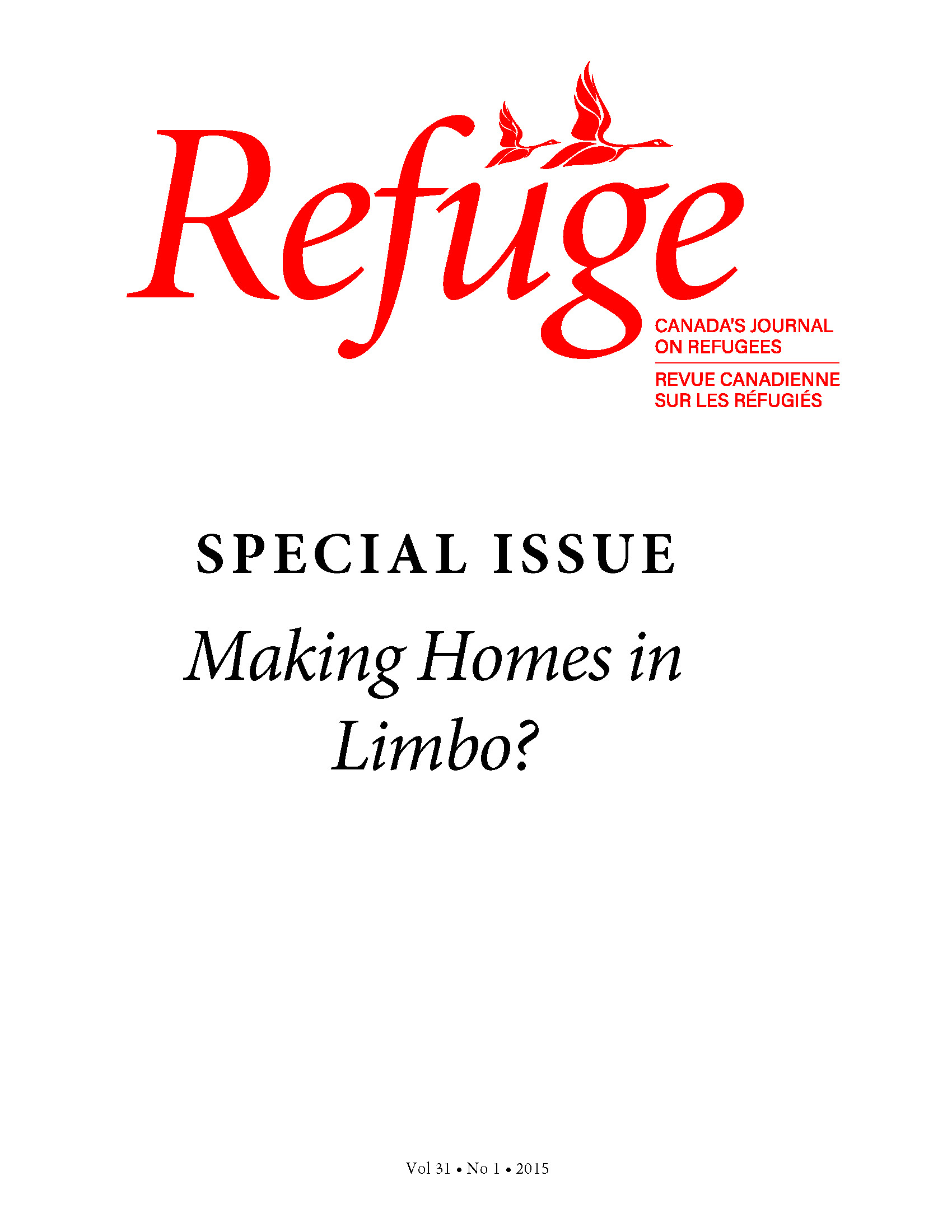Microbuses and Mobile Homemaking in Exile: Sudanese Visiting Strategies in Cairo
DOI:
https://doi.org/10.25071/1920-7336.40149Keywords:
Cairo, Egypt, Sudanese forced migrants, urban refugees, homemaking, social visits, social networks, liminality, mobility, hospitality, identity, genderAbstract
Paying home visits to mark social events and maintain networks is an established cultural pattern in Arab countries. Northern Sudanese displaced in Cairo in the 1990s made significant efforts to continue visiting each other in their temporary homes, despite having to travel long distances to members of their widely scattered networks. The deterioration of the legal and political status of Sudanese living in Egypt during the 1990s contributed to longer-term uncertainty for those who sought safety and security in Cairo. In this article, I argue that this long-term uncertainty constitutes a protracted refugee situation, and that Sudanese visiting practices constituted a mobile homemaking strategy that actively contributed to the negotiation of a complex ethnic identity in their protracted exile. Ranging across space and connecting people through experiences and values of Sudanese “homeyness,” visiting during these fraught years connected individuals and networks into constellations that recreated familiar patterns of homemaking but also encouraged new meanings granted to homeland and belonging. Woven through the more familiar relationship between “home” and “away” were the policy positions about urban refugees taken by the Egyptian government, United Nations High Commission for Refugees, International Organization for Migration, and other humanitarian aid and resettlement agencies, which produced a state-centred view of “home” for Sudanese.
Metrics
Downloads
Published
How to Cite
Issue
Section
License
Copyright (c) 2015 Anita Fábos

This work is licensed under a Creative Commons Attribution-NonCommercial 4.0 International License.
Refuge authors retain the copyright over their work, and license it to the general public under the Creative Commons Attribution-Non Commercial License International (CC BY-NC 4.0). This license allows for non-commercial use, reproduction and adaption of the material in any medium or format, with proper attribution. For general information on Creative Commons licences, visit the Creative Commons site. For the CC BY-NC 4.0 license, review the human readable summary.







